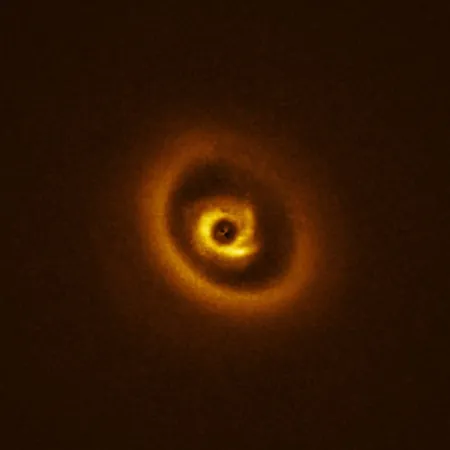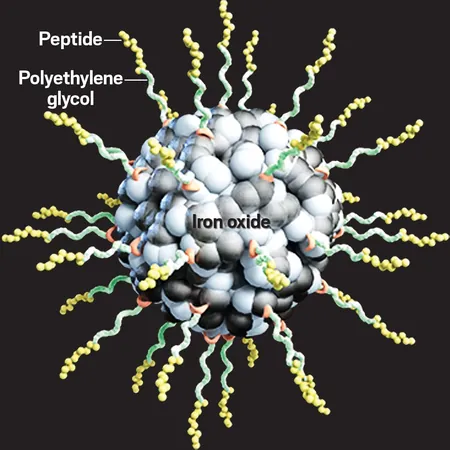
Astronomers Spot Potential Gas Giant in Stunning Planet-Forming Disk Around Star RIK 113!
2025-06-10
Author: Mei
Groundbreaking Discovery 431 Light-Years Away
In an exciting revelation, astronomers wielding the power of the European Southern Observatory’s Very Large Telescope (VLT) have unveiled mesmerizing images of a protoplanetary disk surrounding the star RIK 113, situated around 431 light-years away in the Scorpius constellation.
Unearthing Complexity in Planet Formation
Previously unveiled by the Atacama Large Millimeter/submillimeter Array (ALMA), the intricate nature of this disk hinted at fascinating possibilities of planetary formation. "The discovery of a gap within the disk suggested the presence of a planet-like object within it," shared Christian Ginski, an astronomer at the University of Galway, emphasizing the need for further observation using VLT.
Captivating New Images Reveal Spiral Structures
Utilizing the advanced SPHERE instrument on VLT, Ginski and his team captured stunning new images that showcased spiral features within the inner ring of the disk. "What we’ve witnessed is truly special; it’s extraordinary to find both rings and spiral arms aligning so closely with theoretical predictions of planet formation," Ginski remarked.
Hints of Two Protoplanets!
Intriguingly, meticulous analysis of the VLT data unveiled not just one, but two potential signals suggesting the existence of protoplanets in the vicinity of RIK 113. While these findings are still in the realm of speculation, the repeated evidence from both ALMA and VLT opens the door to promising discoveries.
Unraveling the Mysteries of Planet Formation
Initially, astronomers discovered an inner disk extending out to 40 AU, featuring two spiral arms separated from an outer ring that stretches up to 115 AU. When matched with existing models, these structures suggest the possible presence of an embedded gas giant, with a mass estimate ranging from 0.1 to 5 times that of Jupiter!
A Unique System Worth Watching
The RIK 113 system stands out for its exceptional morphology, featuring spiral arms nestled within a scattered light gap and ring. Researchers speculate that this may hint at higher disk viscosity compared to other known systems, such as PDS 70.
What’s Next for RIK 113?
If these protoplanets are confirmed, RIK 113 could become a crucial experiment ground for studying planet-disk interactions, potentially reshaping our understanding of how planets—like those in our Solar System—have formed. This groundbreaking study has been published in the journal Astronomy & Astrophysics, paving the way for a deeper exploration of cosmic evolution.




 Brasil (PT)
Brasil (PT)
 Canada (EN)
Canada (EN)
 Chile (ES)
Chile (ES)
 Česko (CS)
Česko (CS)
 대한민국 (KO)
대한민국 (KO)
 España (ES)
España (ES)
 France (FR)
France (FR)
 Hong Kong (EN)
Hong Kong (EN)
 Italia (IT)
Italia (IT)
 日本 (JA)
日本 (JA)
 Magyarország (HU)
Magyarország (HU)
 Norge (NO)
Norge (NO)
 Polska (PL)
Polska (PL)
 Schweiz (DE)
Schweiz (DE)
 Singapore (EN)
Singapore (EN)
 Sverige (SV)
Sverige (SV)
 Suomi (FI)
Suomi (FI)
 Türkiye (TR)
Türkiye (TR)
 الإمارات العربية المتحدة (AR)
الإمارات العربية المتحدة (AR)